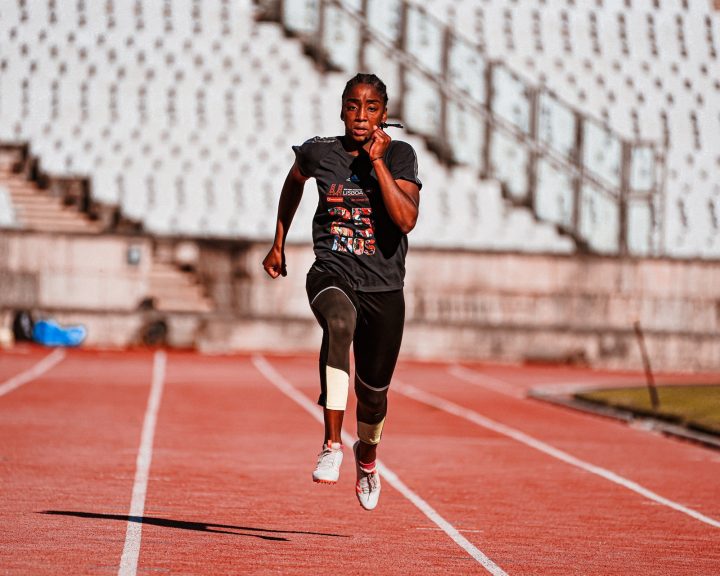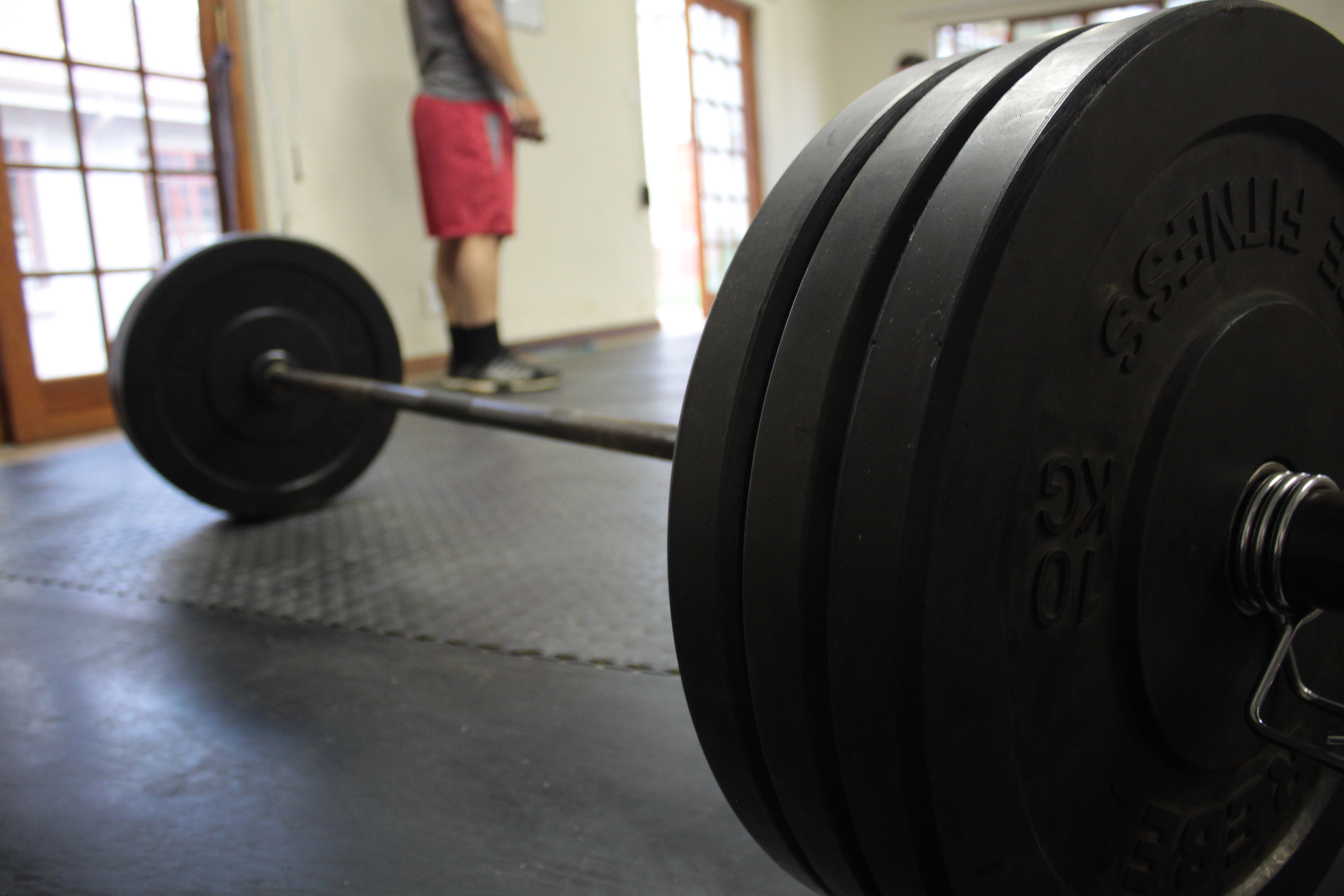The tools that we use to train athletes have to adjust as the athlete moves through his or her career. This is due to a number of factors. First, as athletes progress through their career they creep closer towards their genetic limitations, which requires a wider variety of approaches and tools to enable them to improve while avoiding injury. Second, as athletes advance, simply improving their fitness (strength, speed, power, etc.) is no longer enough to improve their performance. Third, as athletes advance, their competition schedule changes. They begin to spend more time in competition, which makes classic approaches less and less useful.
This is going to be the first of several posts that address this topic. This post, and subsequent ones, will look at this based upon several levels of athletic development: high school, collegiate, and elite/pro. This post is going to look at loading schemes (the amount of work done and its intensity) and these change as an athlete advances.
High School:
Put simply, high school athletes need to work on everything. Strength and conditioning teaches fundamental movement skills, develops broad-based athletic abilities, and develops the athlete’s body to both improve performance and to prevent injuries. Strength and conditioning also has the valuable function of teaching the ability to function during fatigue and in uncomfortable situations. For a coach, however, there are a number of challenges with working with this population. First, participation is broad-based. The pool of athletes is much larger than in collegiate, pro, or the elite levels. This means a wide variety in terms of abilities and body types. Second, coaches may only have a few months to work with the athletes – as opposed to a year-round program. This means developing fitness, teaching the sport, teaching a team concept (where applicable), all while the athletes are competing.
So, with all this in mind, training does not have to be complicated at this level. With a potentially “short” period of time for training (as opposed to year-round training), loading can be done successfully in a range that develops hypertrophy, strength, and technique. If we think of there being several classes of strength training exercises, then we can assign a loading range to each of them with this in mind:
- Olympic lifts: 3-6 reps/set, 60-80% of 1-RM. Focus is on technique, not on moving as much weight as possible.
- Lower/upper body, multi-joint: 4-12 reps/set, 70-90% of 1-RM. Focus is on technique, develop strength, and increasing muscle mass.
- Assistance exercises: 8-15 reps/set. These are supplemental exercise used to develop specific joints and/or muscles.
A four-week approach to training is very appropriate for this age group. During that time, the resistance increases each week for the first three weeks while the amount of work done decreases. The last week represents a back-off week with some testing of core exercises and reduced intensity and volume for everything else. For example:
| Week One | Week Two | Week Three | Week Four | |
| Olympic lifts | 3x6x60% | 3x6x65% | 3x6x70% | 3x6x60% |
| Multi-joint lifts | 3x12x70% | 3x12x75% | 3x10x80% | 1-RM on 1 or 2 exercises, 3x12x60% on everything else |
| Assistance exercises | 3×15 | 3×12 | 3×10 | 3×15 |
The fourth week (i.e. the testing), determines the new baseline for the next four weeks. So, our hypothetical athlete can squat 300 pounds in week one. In week four they test and squat 310. So the loading changes from the first four weeks to the second four weeks as a result:
| Week One | Week Two | Week Three | Week Four | |
| First four weeks | 3x12x210 | 3x12x225 | 3x10x240 | 1-RM (310) |
| Second four weeks | 3x12x215 | 3x12x230 | 3x10x250 | 1-RM (?) |
Collegiate:
Collegiate athletes are working year-round. This really increases a strength and conditioning coach’s options for their programming. Generally this level of athlete responds pretty well to a classic periodization approach – with some twists. The classic approach calls for a gradual increase in intensity accompanied by a gradual decrease in volume, with a focus on peaking/maintaining during the season. The training closest to the season sees the most intense training.
The twist is that most athletes need to display some degree of strength and power during their sport. Since this is a skill, it is something that needs to be practiced. It’s important to incorporate some strength and power work year-round.
With the above in mind, it’s useful to think of exercises based upon what they accomplish. For example, some exercises develop power. Some are focused on maximal strength. Others are assistance exercises. The table below has some thoughts for volume and intensity for each of these exercises as an athlete moves through the year. Under each column the first letter refers to the volume (L for low, M for moderate, H for high), the second letter refers to the intensity.
| Off-Season | Pre-Season | In-Season | |
| Power exercises | L / M | L / M | L / M to H |
| Maximal strength exercises | L / M | L / H | M / H |
| Assistance exercises | M to H / M | L / M | L / L |
Below are examples of how specific exercises might progress through a collegiate athlete’s training year:
| Off-Season | Pre-Season | In-Season | |
| Power clean | 3x6x60% | 3x4x70% | 3×2-4×80-90% |
| Back squat | 3×6-10×70-80% | 3×4-8×80-90% | 3×2-6×80-95% |
| Romanian deadlift | 3×12-15-RM | 3×8-12-RM | 3×4-8 |
In addition, different parts of the season will see a greater number of workouts and exercises focused around training for strength, assistance, or power. This will be dealt with in a later post.
Elite/Pro:
Classic periodization, like what is described for the collegiate athlete, doesn’t work for elite or professional athletes. They are too close to their genetic ceiling, their season is too long, and a lack of specialized work can be a real detriment to performance. This requires thinking outside the box and outside many individual’s comfort zones when it comes to loading.
With this caliber of athlete, it’s very easy to get into a comfort zone and to fail to push the athlete into improving over the course of their training. An approach that I like is to approach training in two to six weeks blocks, depending on what the athlete responds best to. During these two to six weeks, the idea is for the athlete to improve each week. Improvement means doing one more repetition or doing a few more pounds. After two to six weeks, the workout is changed (it may have the same focus, but it is a different workout). This repeats over time. This approach requires the keeping of detailed notes. An example is in the table below:
| Week One | Week Two | Week Three | Week Four | |
| Power cleanEccentric front squats
Pause Romanian deadlifts Glute-ham raises |
3x3x60%3x6x60%
3×6
3×15 |
3x4x60%3x7x60%
3×5 + 10 lbs
3×15 + 10 lbs |
3x3x65%3x8x60%
3×6 + 10 lbs
3×12 + 20 lbs |
3x4x65%3x9x60%
3×4 + 20 lbs
3×13 + 20 lbs |
As you can see from the table, a number of things are going on. The number of repetitions in the power clean is increasing from week one to week two. However, there isn’t need to do many more than four reps per set, so the weight increases in week three. For the eccentric front squats, the number of repetitions per set increases each week. For the pause RDLs, after the athlete can perform three sets of six reps ten more pounds are added to the exercise. Then the volume increases with that weight in week three. Because the athlete can perform sets of six, the weight is increased in week four. For the glute-ham raises, the athlete can perform sets of 15 in week one. As a result, weight is added in week two and again in week three. Because the athlete is not yet at our threshold of 15 reps for this exercise, in week four the weight is held constant and the weight is increased.
When using this approach, increase one variable at a time. In other words, do more reps or add more weight – don’t do both.
This is an optimistic loading progression. Another way to focus on this is to look at the total number of repetitions performed on each exercise and to attempt to increase that by one each week. For example:
Power clean, week one: 3x3x60%, i.e. 9 repetitions.
Power clean, week two: 1x4x60%, 2x3x60%, i.e. 10 repetitions
Etc.
When an athlete has been training for a long time, using the total repetition approach tends to work better.


